27 January 2015, Indian Express
The visit of an incumbent US president twice, and as chief guest on India’s Republic Day for the first time ever, is in and of itself significant. Anyone with even a nodding acquaintance of foreign and security policy will know that bilateral relations with the US constitute one of the more important, if not the most important, bilateral relationships for India. Only the uninitiated or those who habitually make assessments based on flawed assumptions and a profound misreading of where the world is headed would suggest otherwise. The visit was important not only for the elevation of Indo-US ties for their own sake but also for the efforts at seeking convergence in areas other than bilateral, those relating to stability and security in the Asia-Pacific and Indian Ocean regions, particularly as reflected in the US-India joint strategic vision document.
As the world’s two largest democracies, India and the US have worked over the last two decades to develop relations that have evolved steadily. There are nearly 40 dialogue mechanisms in place, demonstrating both the wide canvas and depth of the relationship. It is useful to set aside the hype that usually accompanies summit-level interactions of this kind and seek a clinical perspective. This necessarily requires ignoring commentators who are pathologically anti-US and those who salivate too easily at the prospect of doing business with the US.
The US is the world’s largest economy with a GDP of $18 trillion or more, twice the size of the Chinese economy and nearly 10 times the Indian economy, which has a GDP of less than $2 trillion. Less than a year ago, as a chief minister in election mode, Narendra Modi had to be persuaded to receive the then US ambassador under instructions from Washington to signal a change of attitude when it became clear that the chief minister, subject to a visa denial for over a decade, would be the next prime minister of India. Managing bilateral relations has not been easy. The relationship has been accident prone. Ever so often, it comes to be viewed as being transactional rather than the strategic partnership it is billed to be.
What is important is the need to rescue the relationship from its lows and inject substance and content to give it traction that will generate momentum. And here, the pointers are positive. Both President Barack Obama and Prime Minister Modi have called for forging deeper ties. Obama has gone a step further. He has said the relationship can be the defining partnership of the 21st century. The election of the first African-American president of the US in 2008 was welcomed the world over as a celebration of democracy. Two years before he steps down as the 44th president, he looks good both in terms of his domestic achievements as well as his foreign policy record. The election of Modi as India’s 15th prime minister was similarly a major cause of celebration in the world’s largest democracy. The rest is history. The newly elected prime minister displayed visionary statesmanship. He readily accepted the invitation to visit Washington in September 2014. During that visit, it was decided to establish a contact group to rescue the India-US civilian nuclear deal, which Modi described as the cornerstone of a transformed relationship. That group has accomplished in four months what could not be done in four years. Still more important, this has been accomplished without the need to revisit India’s domestic legislation on nuclear liability. A categorical statement to that effect from Modi, along with the assertion that what has been achieved is consistent with India’s international obligations, should put at rest the continued whining and doubts of those who suggest that there has been a dilution of India’s position. Commercial operationalisation will hopefully follow. The solution found is market-based and innovative, based on international best practices to suit Indian circumstances. The government will indeed be contributing to the insurance pool for the first few years till the insurance companies are able to maintain it on their own. However, this will be an investment and the government will earn a share of the premium on this investment. The profits, if any, go to the pool, whose size will grow with time, thus assuring easy and prompt payments. The impact on the power plant’s cost would be minimal. Even in the US, operators pay an average of $1 million per year per site, a small fraction of the total cost. There will be no additional burden on the Indian taxpayer. Whatever risk exists will be addressed through a risk management scheme. This is where the insurance pool becomes important. More work, however, remains to be done. We will need to utilise the remaining two years of Obama’s terms to persuade the US to do the heavy lifting required to help us achieve full membership of the Export Control Regimes, the Nuclear Suppliers’ Group, the Missile Technology Control Regime, the Australia Group and the Wassenaar Arrangement. The decision to renew the decade-old defence cooperation agreement is significant. This was expected and is again a pointer to the direction in which the two countries wish to develop relations. The identification of four pathfinder projects for joint development and production under the Defence Technology and Trade Initiative should also not be dismissed lightly. It could be the beginning of something significant, if handled well. A much greater challenge will lie in how enhanced economic cooperation, investment and technology from foreign suppliers can be made to contribute to the “Make in India” campaign — especially since both countries want to give a boost to their manufacturing sector in an overall global climate of falling demand. The UPA’s prime minister for 10 years, Manmohan Singh, often lamented that summit-level decisions are not followed up by our line ministries. Will that change now that we have an elected prime minister heading a government with a comfortable majority in the Lok Sabha and hopefully, within two years, in the Rajya Sabha? There is room for optimism.
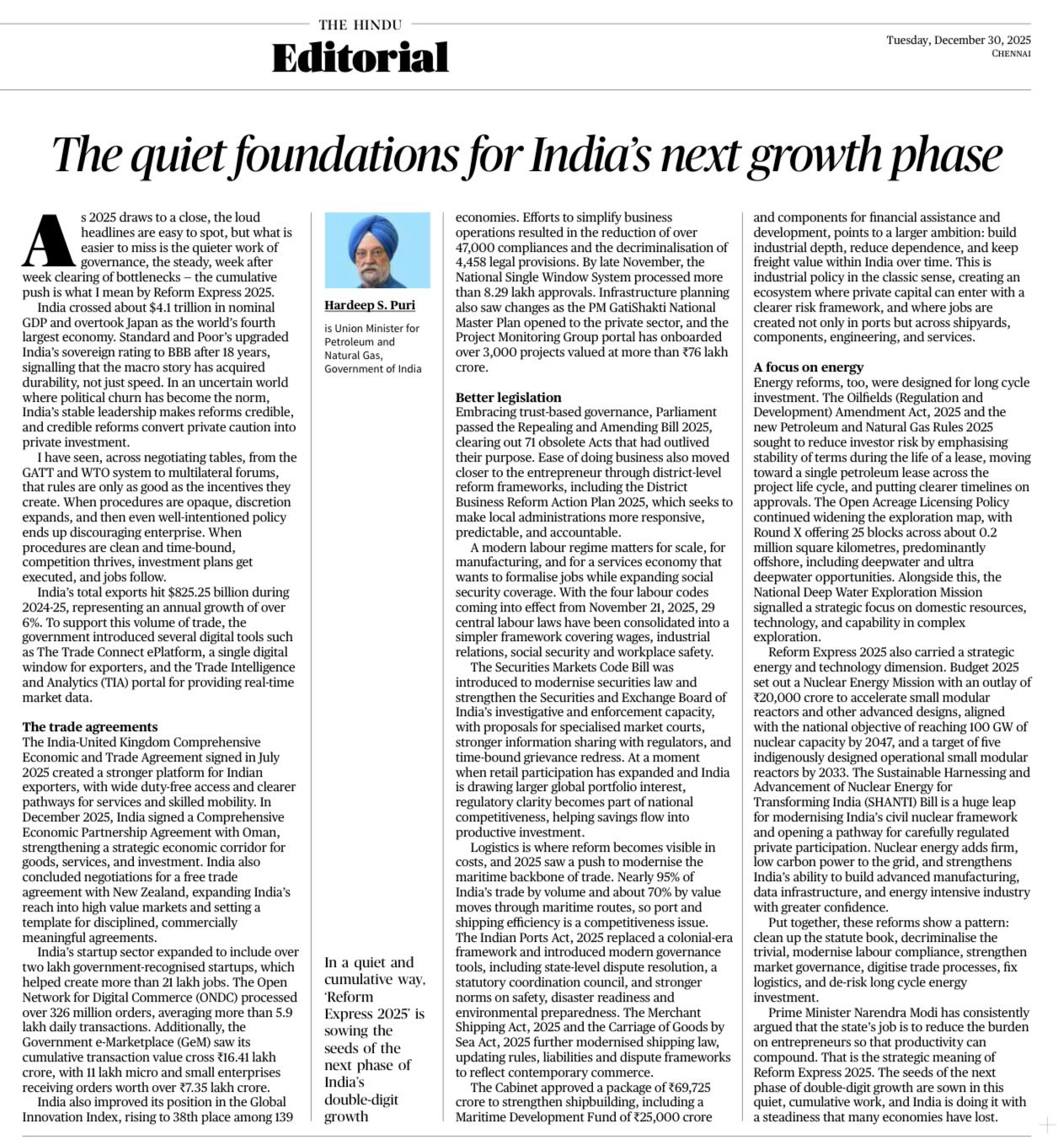
The quieter work of governance, the steady, week after week clearing of bottlenecks - this cumulative push is what I mean by Refo...
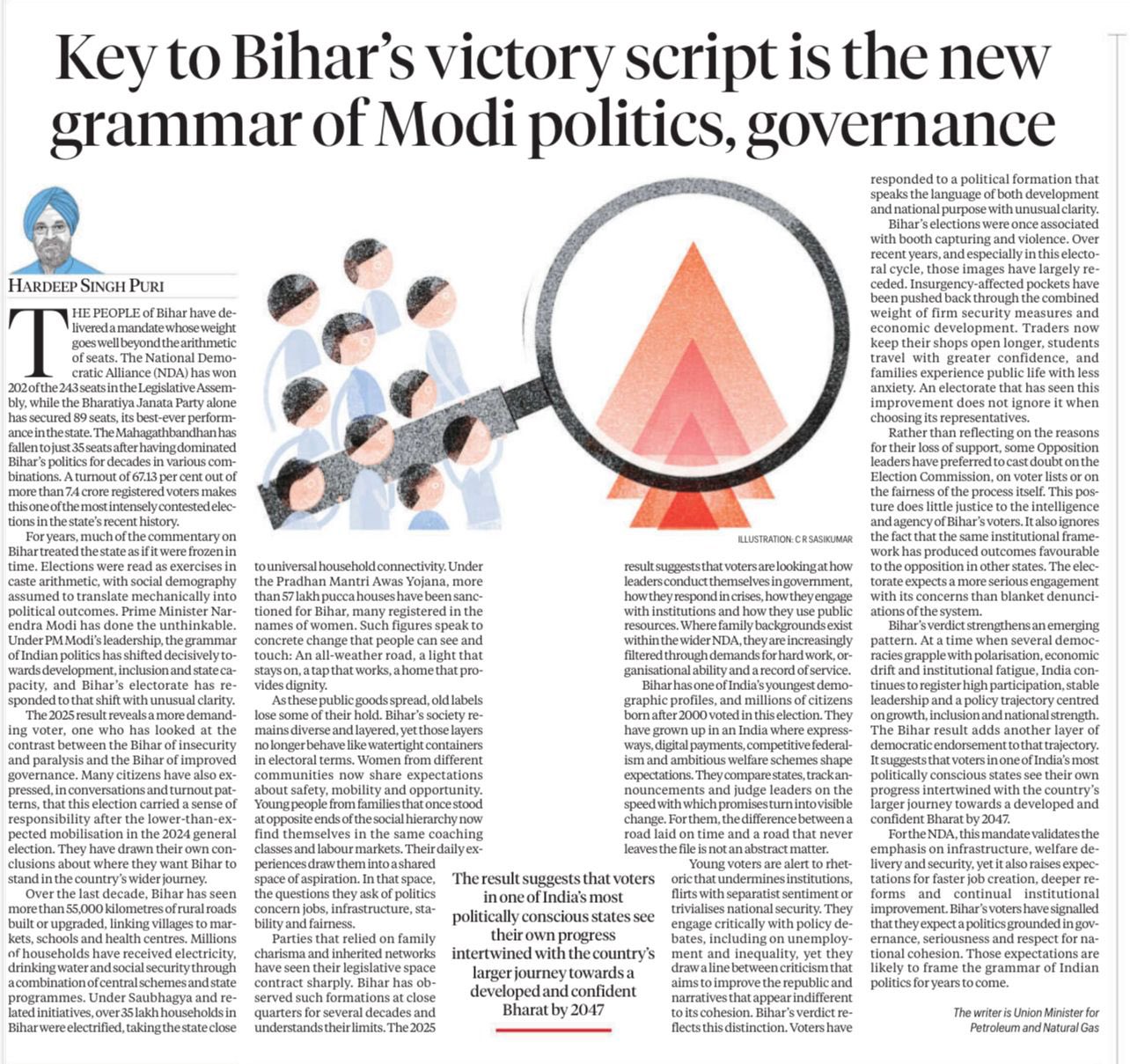
PM Sh Narendra Modi Ji has done the unthinkable in Bihar and it will change the grammar and lexicon of Indian politics for the ti...
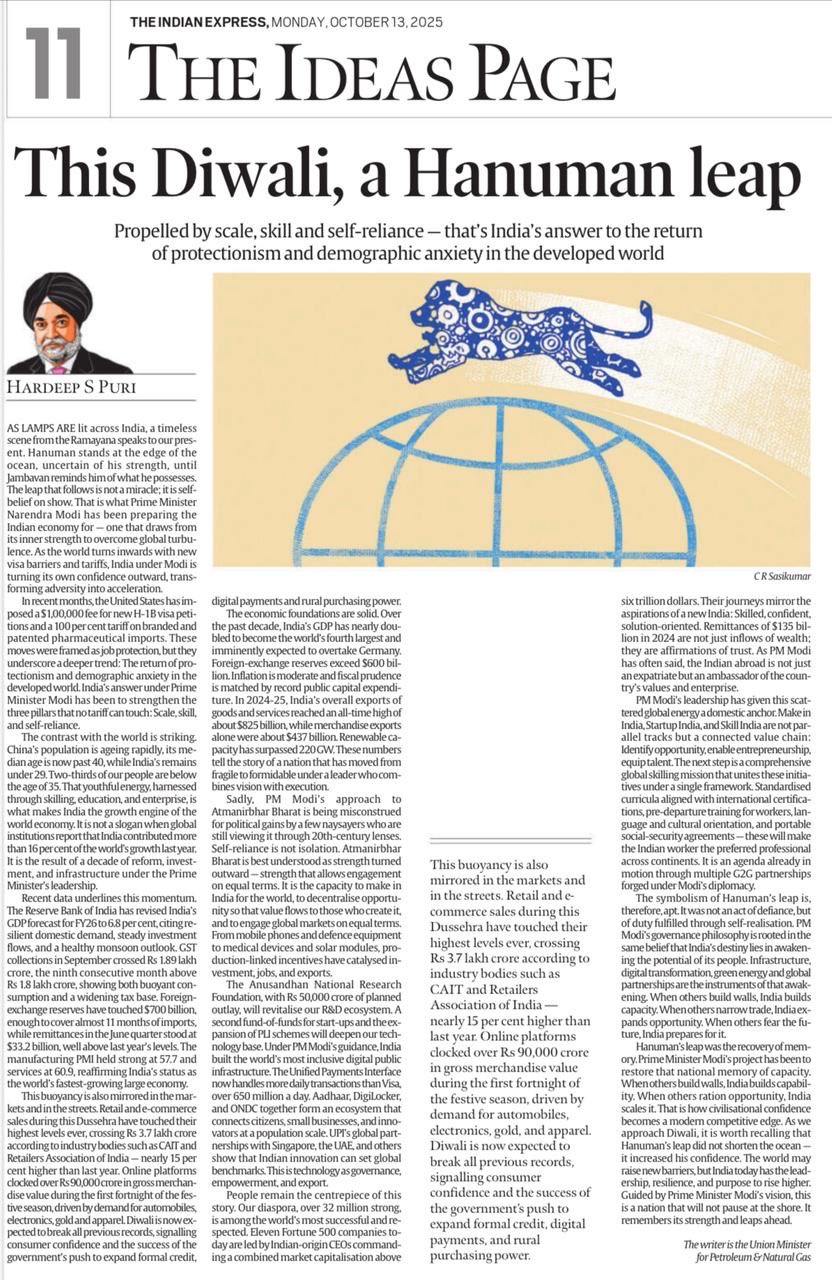
As the world passes through a period of geopolitical turmoil and uncertainty, India, under the visionary & decisive leadership of ...
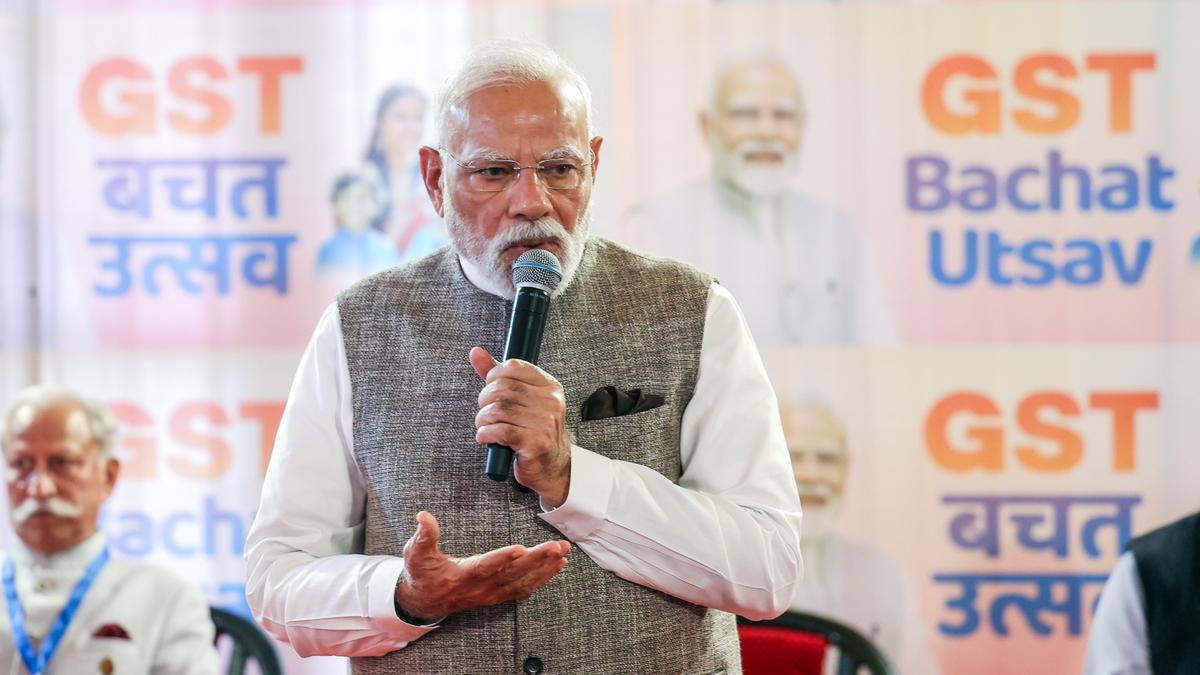
The Prime Minister’s professionalism and work ethic are what make the difference on the ground Praise has been showered on Pr...
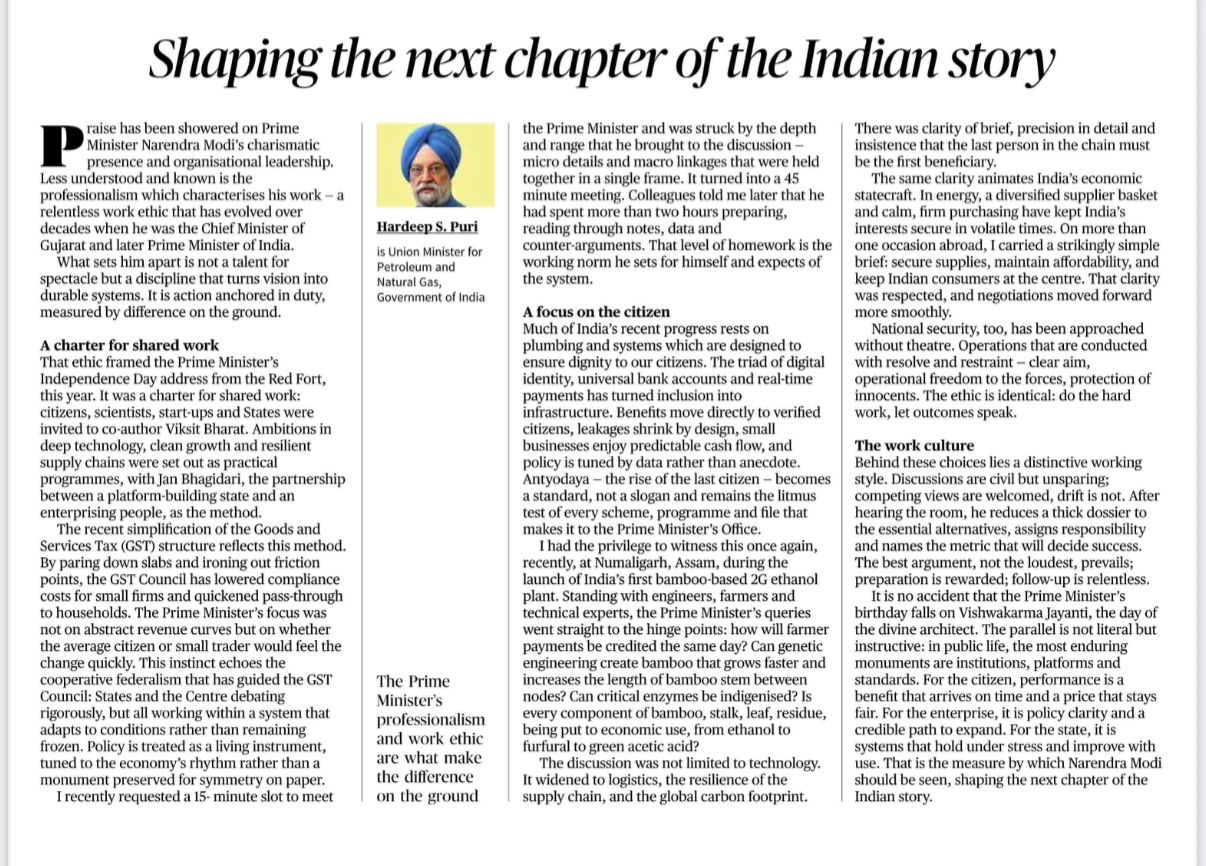
Shaping the next chapter of the Indian story!...
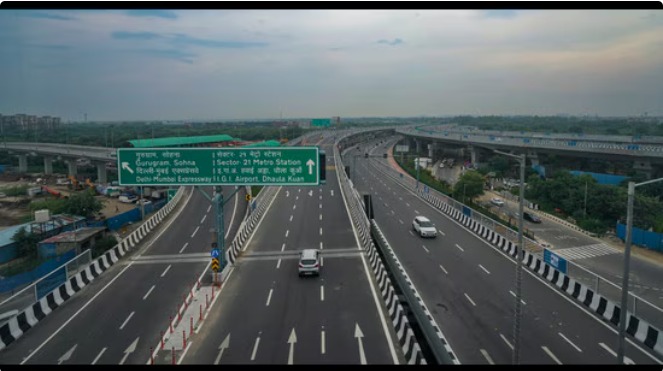
Indian cities are again on that path to being modern yet humane, ambitious yet inclusive, global in outlook yet rooted in our valu...

India’s fact-rich story of resilience, growth and energy security will silence the ‘global doubters’ who call it a ‘dead e...
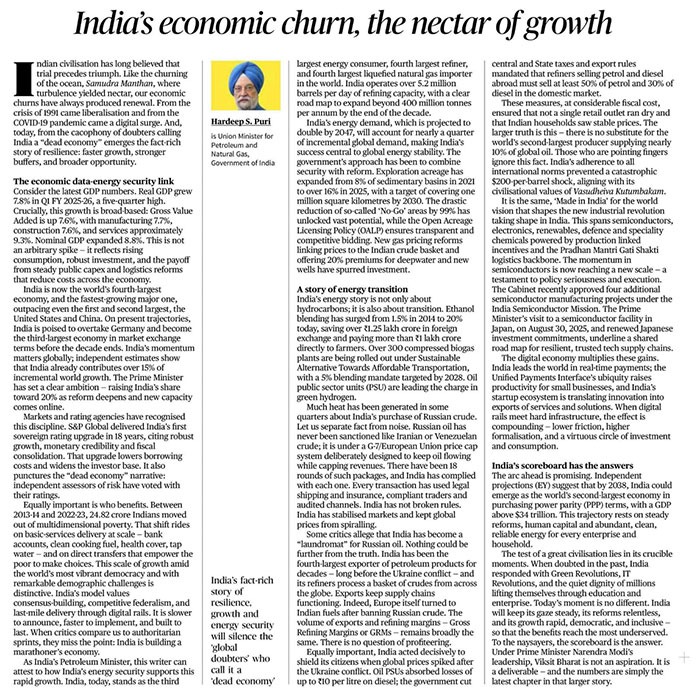
The test of a great civilisation lies in its crucible moments. When doubted in the past, India responded with Green Revolutions, I...
.jpeg)
विकसित भारत के लिए प्रधानमंत्री श्री नरेंद्र मोद...